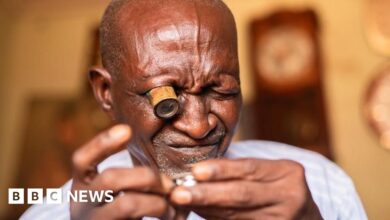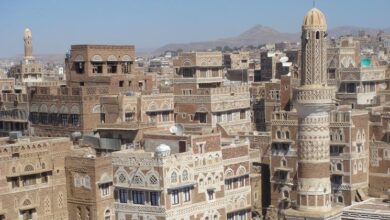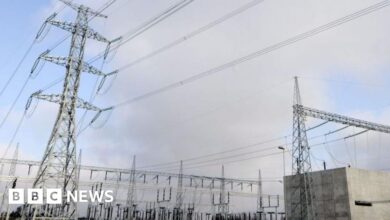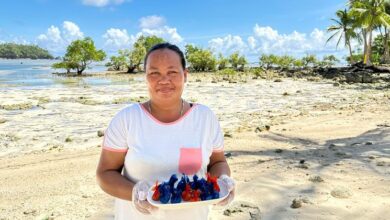Prepare for climate chaos in Timor-Leste, one of the world’s most vulnerable countries
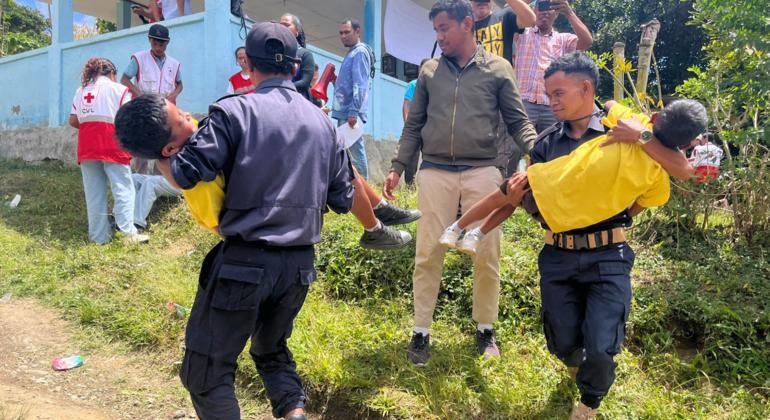
In April 2021, catastrophic flash floods devastated Timor-Leste, claiming more than 30 lives and destroying more than 4,000 homes. Among the hardest hit areas is Orlalan, a remote mountain village with a population of nearly 6,000 people. People there do not know how to protect themselves when flood waters rise and landslides occur.
In Orlalan, community leaders like Armandina Valentina, whose family was affected in the 2021 floods, have taken on the responsibility of educating their neighbors. Valentina is tireless in her efforts, knocking on every door to make sure every citizen knows where to go when disaster strikes. She emphasized that the most vulnerable—pregnant women, children, and the elderly—must be given special attention to avoid panic.
Her activities are part of a national initiative, supported by the United Nations Environment Program (UNEP), aimed at protecting the lives of the Timorese people.

During a disaster simulation exercise in the village of Orlalan, Timor-Leste, children receive first aid
Disaster role-playing game
Another element of the program is a disaster simulation. UN News recently participated in one of these exercises in Orlalan, where children played a key role. During training, they practice staying in visible areas, protecting their heads, and calling for help if they get stuck. Some children simulated injuries and received first aid, while others followed the rescue team to a safe location.
For young volunteer Fretiliana Alves, these simulations are more than just a form of training—they’re also a calling. “My main motivation is to save lives,” she explains. Alves encouraged his peers to join the effort, finding joy in rescuing and caring for those in need.
The success of these efforts depends heavily on local volunteers who understand the risks and terrain in their communities. As Emidia Belo, Disaster Risk Reduction coordinator for the Red Cross Timor-Leste (CVTL), notes, during a disaster, these volunteers are often the first responders. Their intimate knowledge of local conditions is indispensable, especially when access to affected areas is blocked.
Save the most vulnerable
What sets UNEP’s preparation program apart is its comprehensiveness. Training sessions are designed to ensure that people with disabilities, children, the elderly and pregnant women are fully equipped to respond to the challenges posed by disasters. Antonio Ornai, who is visually impaired, participated in the landslide simulation for the first time in September 2024. “I was very grateful to participate,” he said. “I will use everything I have learned to protect myself in the future.”
This approach, according to Emidia Belo, is very important. “Natural disasters affect everyone, but they hit the most vulnerable the hardest,” she added. “Changing community mindsets for preparedness is a long-term process. It’s not something that happens in just one or two years.” With five years of UNEP support, Timor-Leste is making significant progress, but there is still much work to be done.

Solar-powered loudspeakers are being installed in remote areas in Timor-Leste as part of the Multi-Hazard Early Warning System
The alarm sound is loud and clear
In Orlalan, disaster evacuation procedures follow a meticulous five-step plan. First, national authorities provide early warning of the impending danger. Community leaders will then meet to assess escape routes and identify safe shelters. This information is broadcast via solar-powered sound systems, reaching even the most remote villages, while volunteers use loudspeakers to ensure everyone is informed.
Once the evacuation begins, civil defense teams and first responders trained in first aid will be deployed to help those in need. The most vulnerable will be prioritized and once everyone is safely relocated, essential supplies will be distributed by the government to shelters.
But the process is not without challenges. “The hardest part is ensuring enough food during the evacuation,” said Adriano Soares, head of Torilalan, a small village. “Floods destroy crops, deplete our resources and make it difficult for us to survive.”

As a partner organization of UNEP, CVTL is responsible for community preparedness programs in six villages across Timor-Leste
Life-saving, game-changing technology
In a powerful speech at COP29, the United Nations Climate Conference in Baku, Azerbaijan, the United Nations Secretary General António Guterres has pointed out a terrible reality: the world’s least developed countries and island nations have less than 10% of the data they need for effective warning systems. The message is clear—without the right data, lives are at risk.
Efforts are currently underway in Timor-Leste to close this gap.
As part of the UNEP initiative, nine Automatic Weather Stations, two automatic meteorological observation systems, three radars and one marine buoy are being installed across the country.
According to Terêncio Fernandes, Director of the National Bureau of Meteorology and Geophysics, these technologies will help the country develop from a basic level of climate monitoring to a higher level, with the potential to reach level five – a standard for comprehensiveness and reality. Time climate data.
The new AWS stations are low cost and can transmit data without the need for the Internet, a game changer for remote villages like Orlalan. These stations collect important data on rainfall, wind speed, temperature and other meteorological factors, transmitting that data every minute to a central system for analysis.
A legacy of global action
The system being built in Timor-Leste is not just a national achievement; It’s a testament to the power of global collaboration. Much of this progress is a result of decisions made at the 2010 United Nations Climate Conference, COP16Where Green Climate Fund was established to help countries like Timor-Leste adapt to the climate crisis.
As climate negotiations continue at COP29 and beyond, the lessons learned in Timor-Leste can serve as a blueprint for other countries facing emerging threats. same threat.
Now, the people of Orlalan and other communities across the country are learning to live with the reality of a changing climate, but they are also preparing for it together. With technology, knowledge and community spirit, they are proving that resilience, even in the face of disaster, is within reach.

